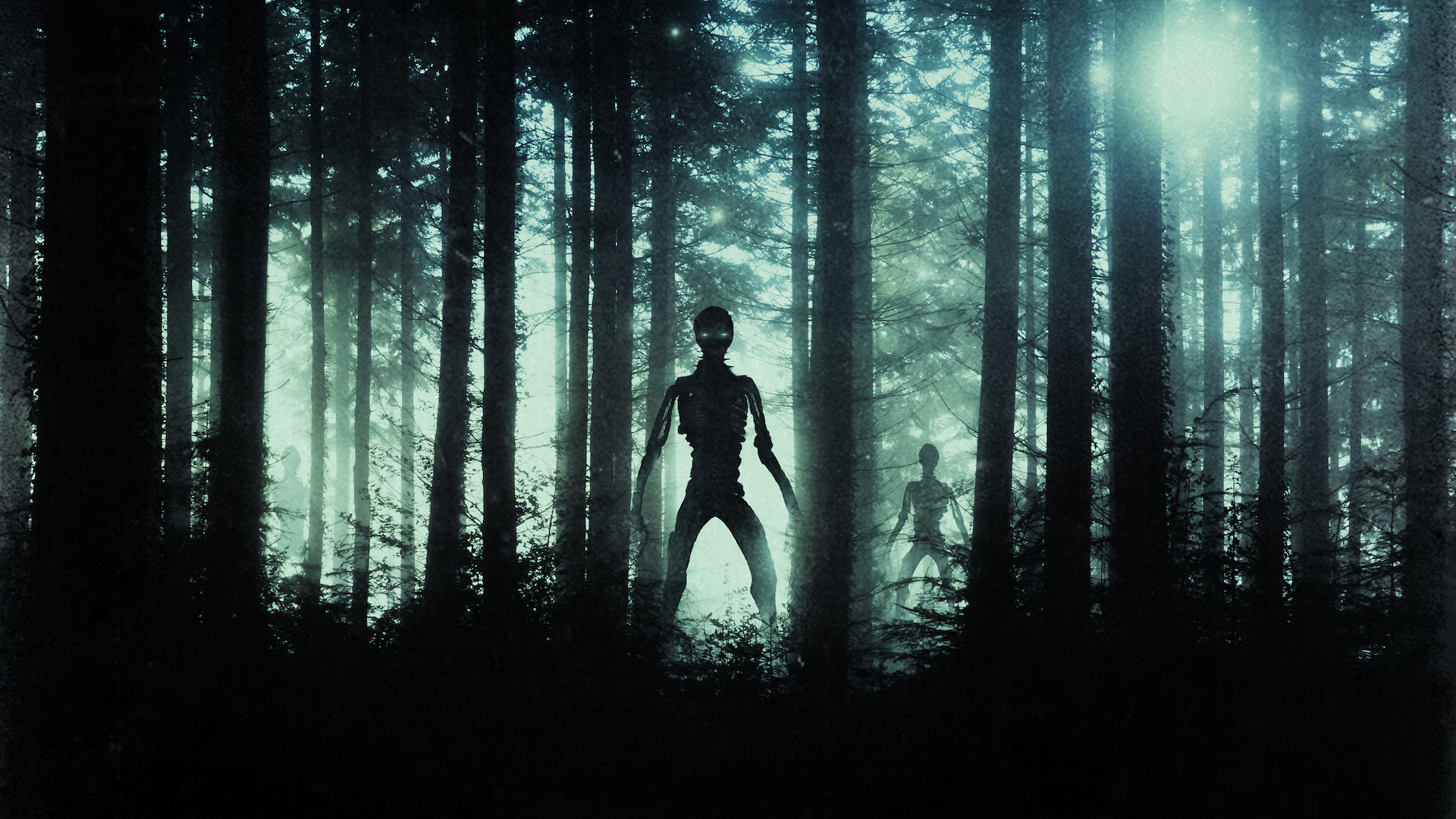
Are we alone in the universe? It's one of life's biggest mysteries and one that is explored by science fiction and scientists alike. But if there is alien life on other planets, what might it look like?
While little green men or towering predators are the stereotypical depictions of extraterrestrials in film, any aliens that might be out there are unlikely to resemble those characters, experts told Live Science. Instead, the unique environment of the moons or exoplanets that these aliens call home could make their physiology completely different from anything found on Earth.
Some aliens might evolve to only fly through their planet's sky as a result of a dense planetary atmosphere, Adam Frank, a professor of astrophysics at the University of Rochester, told Live Science. Or, in cases of planets with high gravity, he said that aliens might develop to be sturdier "more like elephants."
Or perhaps life would evolve to live underground, Valentina Erastova, a chancellor's fellow of chemistry at the University of Edinburgh, told Live Science. If a planet has high levels of radiation not absorbed by an ozone, that might result in subterranean life that uses soil as protection. In this case, Erastova suggests that simple multicellular life might look similar to fungi. While we usually see the fruiting body of a fungus above ground, most of its life actually happens underground in a vast network of roots called mycorrhiza.
"Even on Earth, there are more life-form varieties inside [the Earth] than walking on top of it," Erastova said.
Related: Are aliens real?
In cases of extreme ultraviolet (UV) radiation, work published in the journal Monthly Notices of the Royal Astronomical Society in 2019 suggests that aliens might actually glow red, blue or green as a way to protect themselves. Like some corals, these organisms might have proteins or pigments that can absorb some of the UV light's energy, which would then make them glow in a safer wavelength on the visible spectrum, according to the study.
Another potential adaptation, said Frank, would be aliens with very slow metabolism as a result of the frigid temperature of their home world.
Titan, Saturn's largest moon, is a nice example of a very cold world that scientists speculate could possibly be home to extreme life living in methane seas, Frank said. Sloths on Earth are an example of animals with extremely slow metabolisms — their metabolism is only 40 to 45% that of other animals their size — which move very slowly as a result.
Would aliens look like humans?
Yet, while these wild looking aliens would be amazing to discover, any extraterrestrial life out there would probably be much simpler than flying, sturdy, fungus-like or glowing organisms.
"It is far more likely that life would be single cellular," Sarah Rugheimer, an associate professor of astronomy and astrophysics at York University in Toronto, told Live Science in an email. "The majority of time on Earth, the only life that existed was microbial. Even today, most of the biosphere is microbial."
Spotting single cell life all the way from Earth might prove to be a difficult task, but one way scientists suggest solving this problem is by looking for evidence of life that microbes might have left behind. In a 2019 study published in the journal Astrobiology, scientists reported that calcium carbonate formations left behind in dried up hot-springs might be formed by the hot, pasta-like mats of extraterrestrial microbes. Finding such formations on other planets could point toward a promising source of fossilized microbes, scientists suggested.
That said, if alien life has evolved into multicellular life, Rugheimer said it is still "very unlikely" that it would look exactly like humans. Our unique physiology is both a result of evolution in a unique Earth environment, as well as a good dash of luck, Frank said.
However, alien life may still have some animal-like traits as a result of convergent evolution, Rugheimer said — for example, eyes to see the environment and limbs or wings to traverse it. But that could be where the similarities end.
Of course, all these ideas are based on the assumption that extraterrestrial life would need similar necessities to Earth-life — like water, sunlight, and oxygen — in order to survive. It's also possible that life on other planets could evolve in a completely different way, or even with a completely different elemental structure.
For example, many aliens from science fiction are composed of silicon instead of Earth life's carbon. In an area of study with so many unknowns, Rugheimer is at least confident that this idea seems unlikely.
"Carbon is more abundant than silicon and forms more complex chemistry," she said. "[But] the one thing I think is true is that we have no idea what they would look like."







